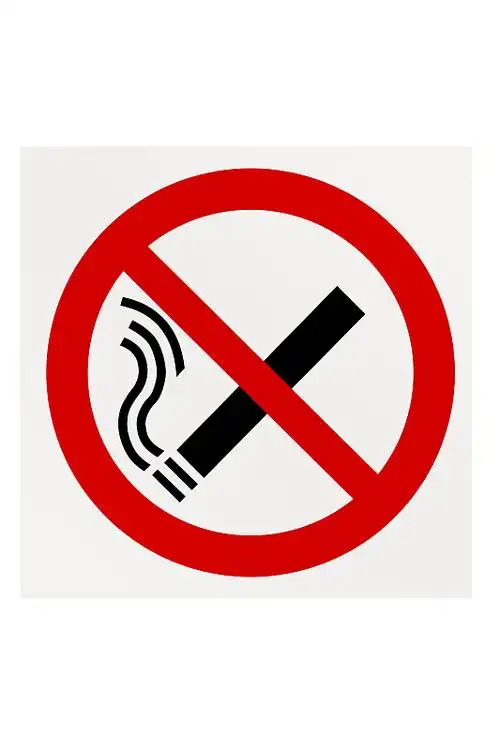The Unseen Danger: How Smoking Amplifies the Risk and Severity of Recurrent Spontaneous Pneumothorax
Imagine taking a breath and feeling a sudden, sharp pain in your chest, followed by a sensation of air hunger. This is the terrifying reality for someone experiencing a spontaneous pneumothorax, a condition where air leaks into the space between the lung and the chest wall, causing the lung to collapse. For many, this is a one-time, frightening event. But for a significant number, particularly those who smoke, it marks the beginning of a recurrent and often more severe health battle. The link between smoking and the initial occurrence of a collapsed lung is well-documented. However, a deeper and more pressing issue is how the habit of cigarette smoking dramatically increases not only the chance of a spontaneous pneumothorax recurrence but also the severity of each subsequent episode.

To understand this, we must first grasp what a spontaneous pneumothorax is. Our lungs are surrounded by a thin, two-layered membrane called the pleura. The inner layer sticks to the lungs, and the outer layer lines the chest wall. Between them is a potential space with a tiny amount of fluid for lubrication. A spontaneous pneumothorax occurs when air enters this pleural space, disrupting the negative pressure that keeps the lung inflated. This is often due to the rupture of small, air-filled sacs on the lung surface called blebs or bullae. The primary type happens in tall, thin, young people without any obvious lung disease, while the secondary type occurs in individuals with pre-existing conditions like COPD or emphysema.
Now, let's talk about the elephant in the room: smoking. Cigarette smoke is a toxic cocktail of thousands of chemicals that wreak havoc on the entire respiratory system. It causes chronic inflammation, damages the delicate elastic fibers of the lungs, and impairs the body's ability to repair itself. This systemic damage is the primary driver behind the heightened risk of recurrent spontaneous pneumothorax in smokers. When you smoke, you are essentially weakening the very architecture of your lungs, making them more prone to developing and rupturing blebs.
The journey from a first-time collapse to a recurrent pneumothorax is where smoking plays its most devastating role. Statistics show that without intervention, the overall recurrence rate for a first spontaneous pneumothorax can be as high as 30-50%. However, for smokers, this risk skyrockets. Studies consistently demonstrate that active smokers have a significantly higher likelihood of experiencing a recurrent collapsed lung compared to non-smokers. But why is this the case?
The answer lies in the impaired healing process. After a lung collapse, the body attempts to heal the rupture on the pleura. In a healthy, non-smoking individual, this healing can be effective. However, in a smoker, the toxic environment created by cigarette smoke severely hampers this process. The chemicals in smoke, particularly nicotine and carbon monoxide, reduce blood flow to the tissues, deprive them of oxygen, and disrupt the function of cells responsible for tissue repair. This means the initial site of the rupture heals poorly, remaining a fragile, weak spot highly susceptible to re-rupture with even minor changes in pressure. Furthermore, the ongoing inflammation from smoking continues to generate new blebs throughout the lungs, creating multiple potential sites for future collapses. This creates a vicious cycle of damage and inadequate repair, directly leading to an increased risk of recurrent spontaneous pneumothorax.
Perhaps the most critical and underappreciated aspect of this relationship is the escalation in severity. A recurrent pneumothorax in a smoker is often not just a repeat of the first event; it is frequently worse. The severity of a collapsed lung is measured by the percentage of lung collapse, the associated symptoms (like severe breathlessness or low blood pressure), and the complexity of treatment required.
Smokers are far more likely to present with a tension pneumothorax, a life-threatening condition where air enters the pleural space but cannot escape, building up pressure that pushes the heart and major blood vessels to the opposite side of the chest. This constitutes a medical emergency. The reason smokers are prone to this severe complication is that the underlying lung disease caused by smoking—such as emphysema—creates a "one-way valve" effect at the rupture site. Air can be pushed out of the lung into the pleural space with each breath, but the diseased tissue around the hole prevents it from flowing back, leading to a rapid and dangerous buildup of pressure.
Moreover, the management of recurrent pneumothorax becomes more challenging in smokers. For a first-time, small collapse, a conservative "watch-and-wait" approach or simple aspiration might suffice. For recurrences, especially in smokers, doctors almost always recommend a more definitive procedure like video-assisted thoracoscopic surgery (VATS). This surgery involves stapling or sealing the blebs and performing a pleurodesis—a procedure that creates adhesions between the lung and chest wall, effectively gluing them together to prevent future collapses.
However, smoking complicates this too. Smokers have a higher rate of postoperative complications, including infections, prolonged air leaks from the lung tissue, and a higher failure rate of the pleurodesis itself. The poor healing capacity, coupled with a chronic cough that strains the fresh surgical sites, means that the very procedure designed to stop the recurrences is less effective. This often leads to longer hospital stays, the need for additional surgeries, and a more protracted and painful recovery period. Therefore, the impact of smoking on spontaneous pneumothorax recurrence severity is evident not just in the acute event but throughout the entire treatment journey.
So, what is the solution? The single most effective intervention for anyone who has experienced a spontaneous pneumothorax and smokes is unequivocally to quit smoking immediately. This is not just a gentle suggestion from a doctor; it is the most powerful medicine available to prevent future life-threatening episodes. The benefits of smoking cessation begin almost immediately. Within weeks, lung inflammation decreases, and the cilia—tiny hair-like structures that clear debris from the airways—start to recover function. Over months and years, the risk of recurrence begins to fall significantly toward that of a non-smoker.
Quitting smoking is the cornerstone of preventing severe recurrent spontaneous pneumothorax. It breaks the cycle of inflammation and tissue damage, allowing the lungs to begin a genuine healing process. For a patient recovering from a collapsed lung, quitting is as crucial as the surgery or chest tube that re-inflated their lung. It is an active step they can take to reclaim control over their health and drastically alter their clinical prognosis.
In conclusion, the connection between smoking and spontaneous pneumothorax is a dangerous synergy. Smoking initiates the damage that leads to the first collapse, dramatically increases the risk of a second, third, or even fourth event, and critically, amplifies the severity of each recurrence, pushing patients toward more complex and life-threatening complications. Understanding this profound link is vital. If you have experienced a spontaneous pneumothorax, view it as a critical warning signal from your body. It is a clear, urgent message that your lungs are vulnerable and that continuing to smoke is playing with fire. By choosing to quit, you are not just reducing a statistic; you are actively choosing a path that leads away from the emergency room and toward a future of healthier, more secure breaths.












